There definitely needs to be a little better planning on our part, meaning we humans, because we have two major holidays that come up in winter, which is good because we need something positive to focus upon as the weather goes hyurgl, but they’re slammed close together towards the beginning of the season (in fact, there’s yet another holiday beating them both to the draw, coming up very soon,) and then there’s bupkiss afterward. We need something exciting to happen, say in mid-February, to help break all this up. And no, not Valentine’s Day, which counts as anything from wishy-washy to downright sadistic for up to half of the population. Let’s start a movement to make Darwin Day (February 12) much bigger than it is, with special food dishes and television specials and so on; this will have the added benefit of really pissing off the creationists, so win-win there.
But until that happens, we have nature photographers in the mid-latitudes, or at least me (how many others do you follow?) trying to drum up something of interest when it’s cold, grey, and rainy, which brings us to this. I had a couple of idle photo topics that I’d been intending to tackle for a while now, and finally did some shooting. Don’t get too excited, seriously.
The first is, while in central New York I collected a bunch of freshwater snail shells from the lake I grew up on (directly on, raised on a raft – I learned to hunt crayfish long before I learned to ride a bike.) It’s kind of curious; for a long time I never even knew the lake hosted snails, and then one winter when the ice was thick enough to venture out on but still pretty clear, my friend and I found a huge collection of shells on the bottom, well out from the shore but still in shallow water, and knocked a hole in the ice to collect a bunch, practically freezing our hands solid in doing so. Then I never saw many again, up until this summer. The place that I’d stayed at suddenly got inundated with them this year, on the shores and in the small bay by the docks, when they never had before; some vagary of currents had washed millions of them ashore, so collecting them was a matter of just digging my hands into the mounds of them in the shallows.
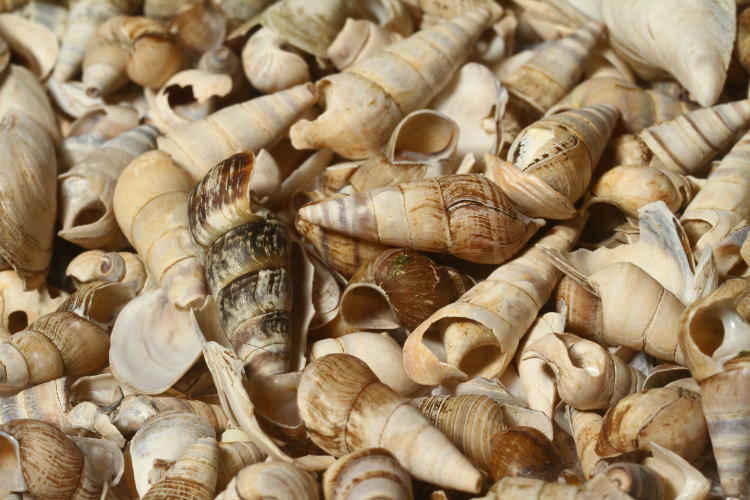
As usual, shells look much better wet than dry, and after cleaning them, they developed a dull, muted coloration, not half as interesting as they’d appeared when wet. Now, I could always soak them down before shooting, but I decided to try something else, and picked a small selection to paint with clear acrylic. This had the desired affect, as well as making them easier to handle than wet shells, which not only require drying one’s hands before grabbing the camera, but also makes them tend to cling together and drip and all that.

Despite the fact that I was indiscriminate in just collecting a few handfuls of them, none were occupied by live snails; those don’t tend to get driven much by currents, and the snails themselves aim for areas that provide their food and not expanses of empty houses.
None of these were very big either, averaging about 15-20mm in length, but some of them were remarkably small.
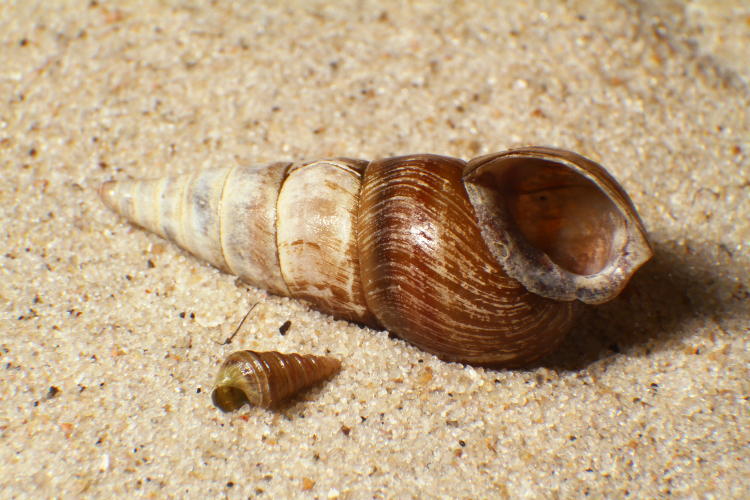
I’m showing roughly the biggest and smallest here, ranging from 28mm down to just under 7, and no, I’m not finding out what species they belong to – I’m not even sure where to begin looking.
The sand, by the way, is some pretty fine stuff, not from central New York but from coastal NC. From a typical viewing distance it appears pale grey, but up close the quartz nature of it can be seen easily. ‘Up close’ means with some serious macro magnification, the reversed 28-105.
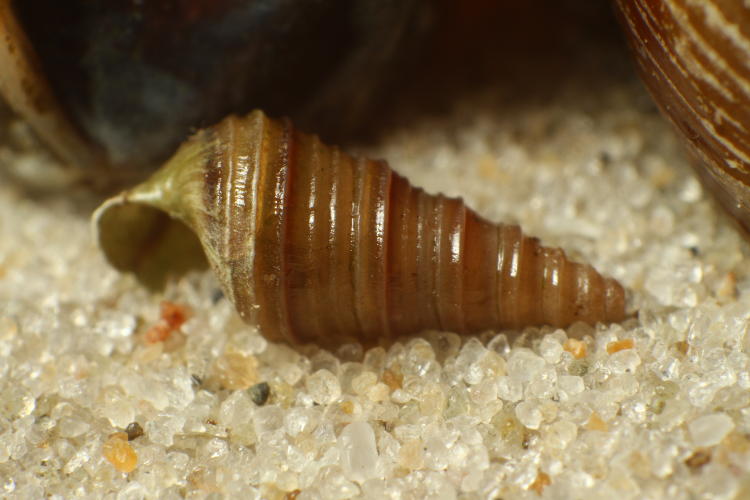
This is the same small shell again. Like I said, I tend to save these projects for the slow season, and two days ago when I tackled this, it had literally rained all day long, so, yeah.
But I had something else that I did this session, which had been sitting in my curio cabinet for, oh, since this outing.

I found this deceased turtle, exactly as seen here, sitting atop the washout detritus left behind by high river levels, and figured it had not been there long, but how long ago it had actually expired I could only guess. The lack of any ridges around its scutes (shell pattern pieces) indicate that it was less than a year old when it died, and overall it measures 39mm, slightly larger than a large coin or, if this helps (of course it does,) the same diameter as a film can. I am reasonably sure this is a river cooter (Pseudemys concinna) due to some details that we’re about to see.
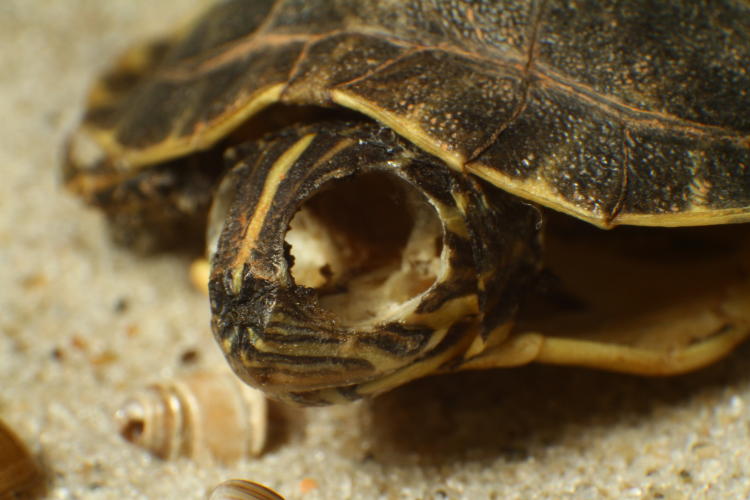
But first, we go take a morbid peek into that eye socket, which shows just how much space a young turtle’s eyes take up in it head. Amphibian brains are not very big nor terribly developed, in comparison to many other classes anyway, but they’re still sufficient to the need.
Now we can take a look at more interesting and telling detail.
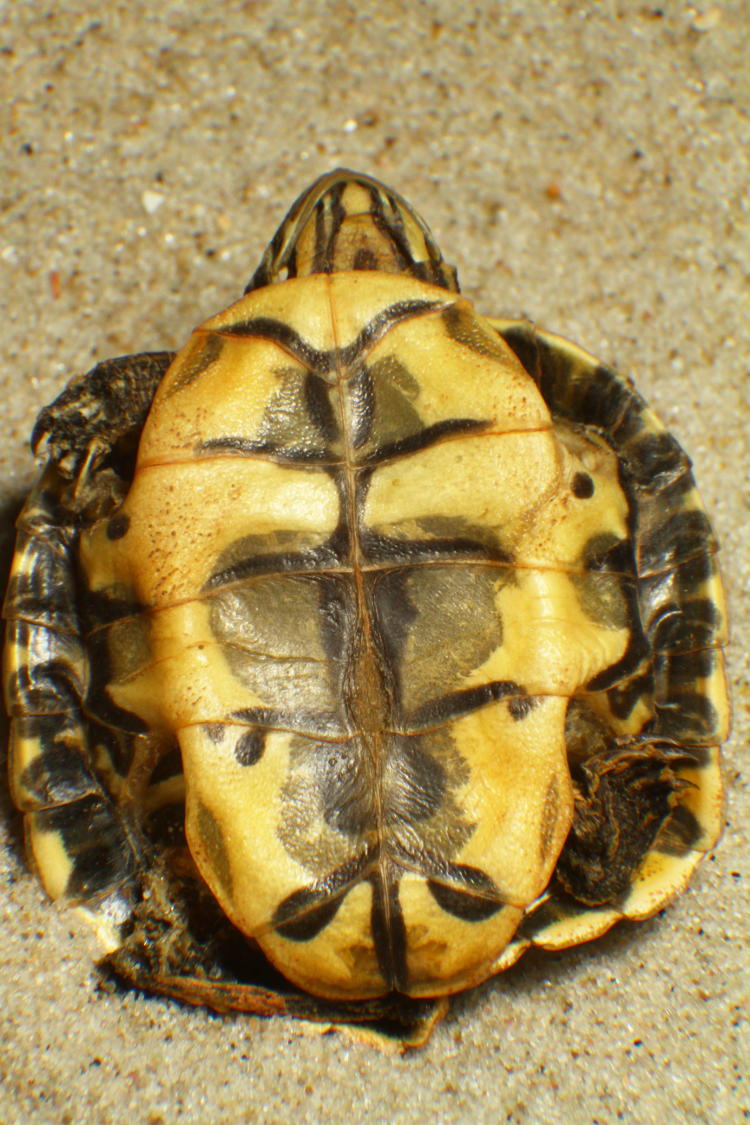
This detailed pattern on the plastron is what identifies the species, or so I believe – you know how often I hedge my bets. I mean, what if I decided (after some brain injury) to run for political office, and then someone dug up an old post of mine where I confidently misidentified a dead turtle? Imagine the scandal! No, I gotta play it safe.
[Yeah, like the posts ripping apart religion will all go past without notice in this country…]
One more detail shot, because.
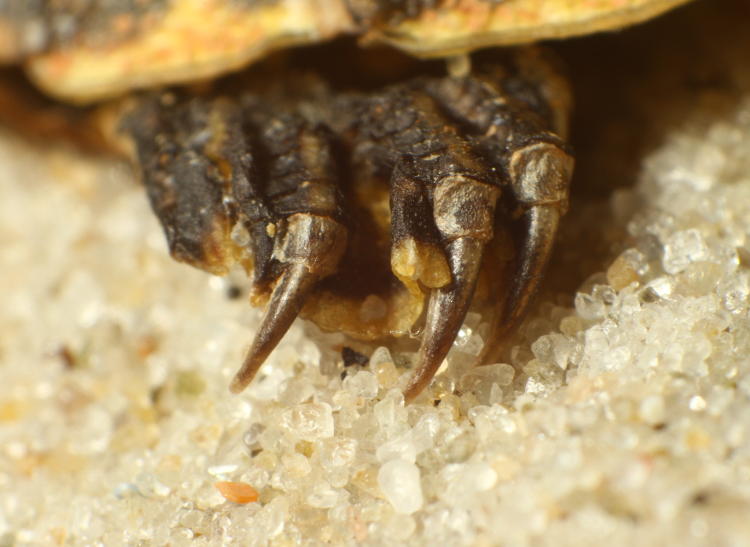
This is one of the hind claws, and the exposed portion of the longest nail there measures all of 2mm. The skeleton of my specimen is surprisingly intact: one foreleg is missing, and a couple of neck vertebrae, but that appears to be it. Notably for turtles, the carapace and plastron form most of the ribcage and vertebrae, so what remains are the limbs, really. Yet as you can imagine, this is still very delicate, so it largely stays in my cabinet without being handled, a nature photographer’s version of a Star Wars figurine. Okay maybe not.
And I just realized that I tried to muddle through the dead season by shooting… dead things. Way to go, me. Maybe I should just stick to the cats or something.



















































